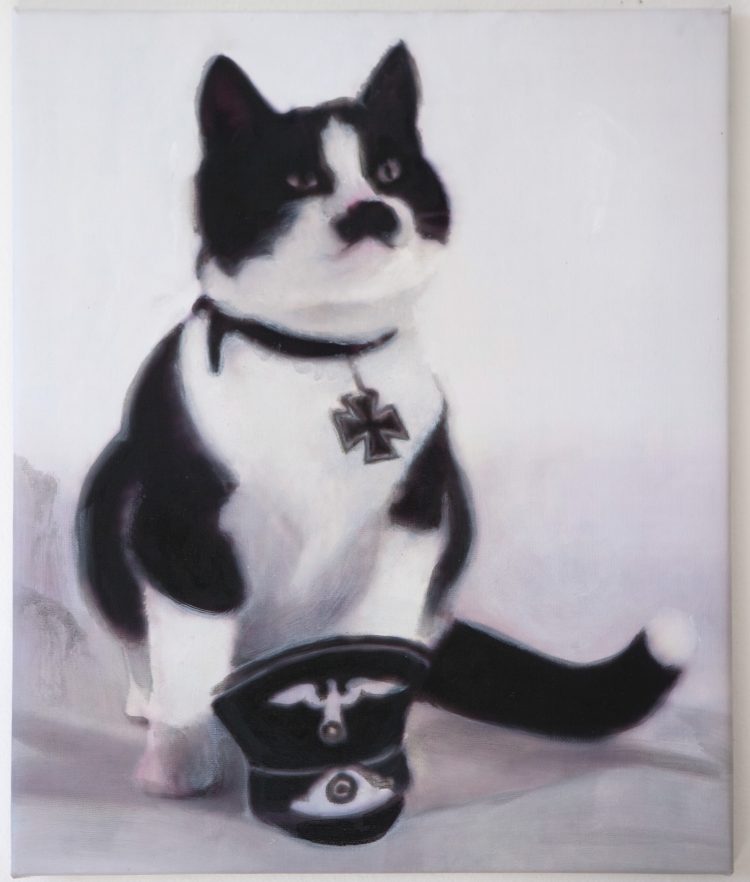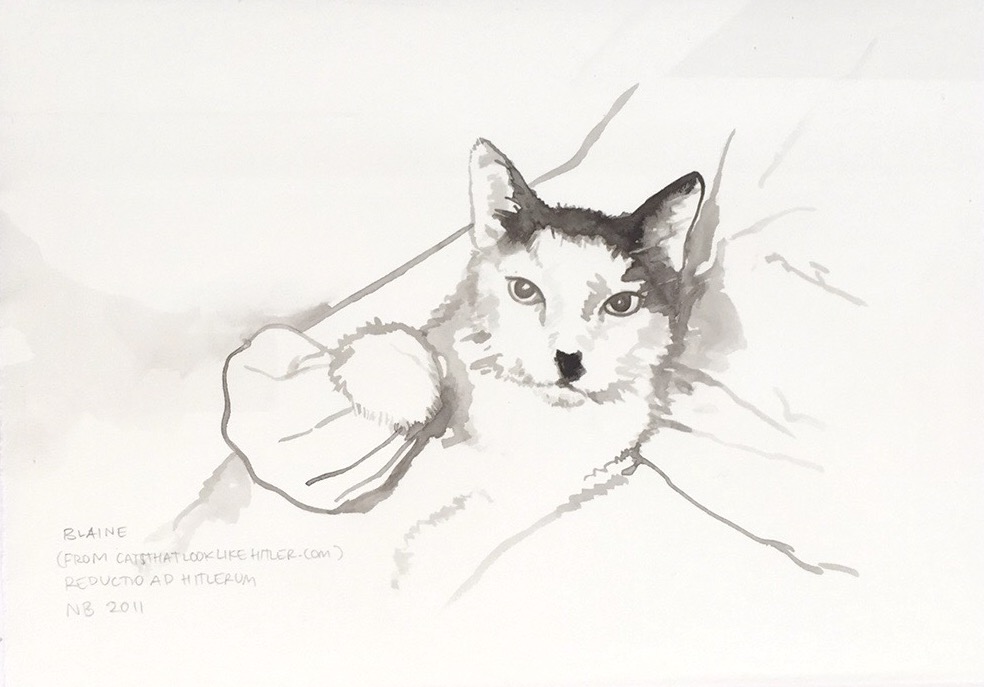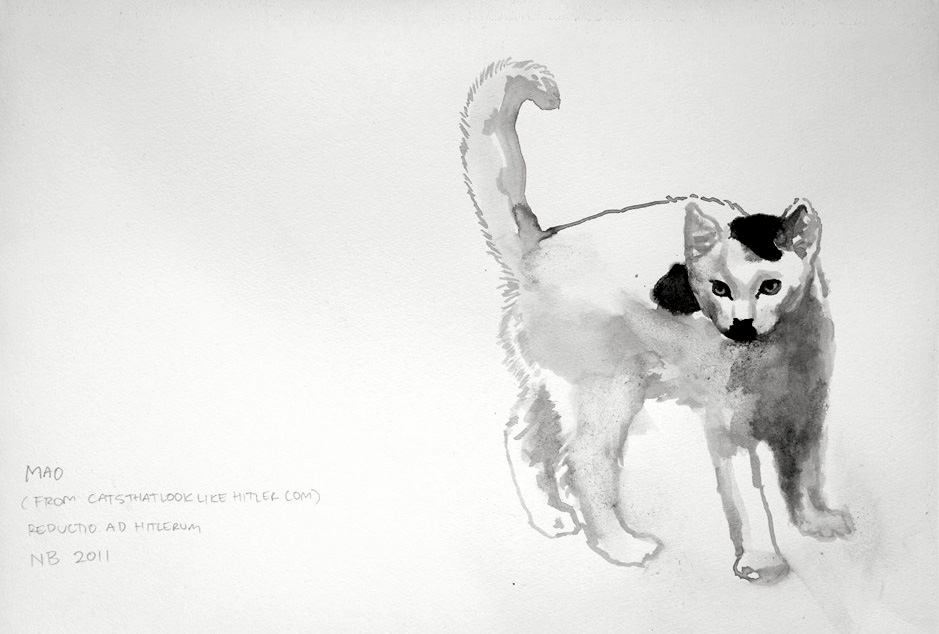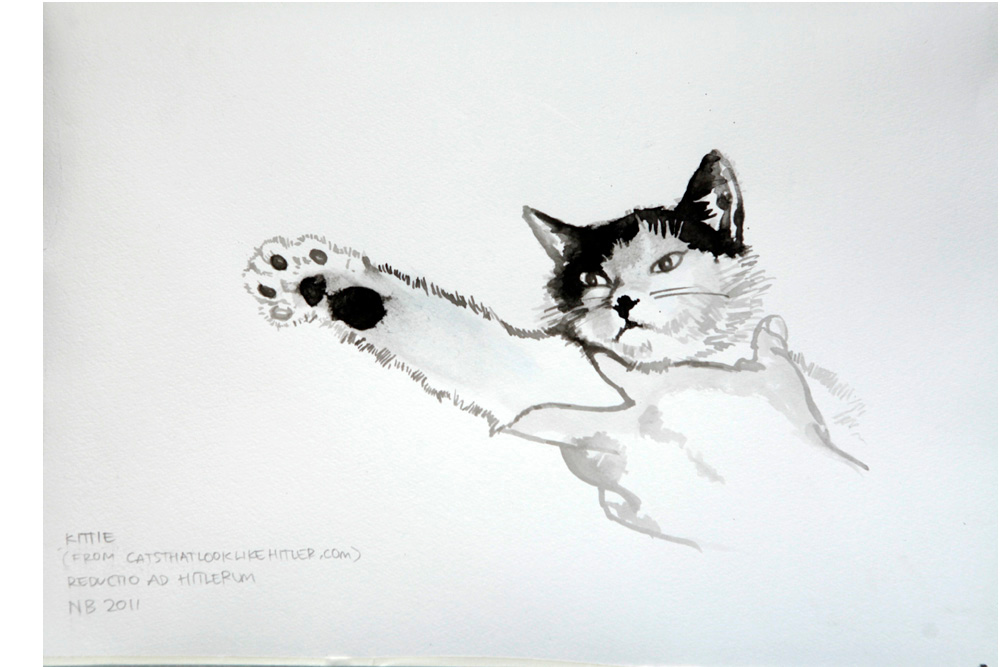
Reductio ad Hitlerum
Understanding animals as a sideeffect of YouTube and social media.
Since 2005 YouTube has given us Keyboard Cat, Skateboarding Dog, and Christian the Lion which have been the most shared, viewed and loved video material on the net. Obviously Temple Grandin and Jane Goodall will not learn anything from this, but for people whose main source of understanding animals, is through TV, the effect of youtube videos is profound.
My art explores how images are being used as information, memes and currency, to be traded for goods, services and rights. I analyze how images aquire their value, where the animal videos score high on sentimentality, with great potential for empatic connection.

Animal images are also used ironically, as on the site Cat’s that looks like Hitler, where images of cats that only bear the slightest resemblance to the übermensch, serve as tokens to join a closed club and it’s fora. In a series of paintings I highlight the phenomena, of the inverse correlation between the quality of online discussions and how early Adolf Hitler or the Nazis are being brought up to smear the opponents.

As social media’s has engulfed us, the algorithms repetitive filter bubble effect pushes prolific users to innovate their postings. The tsunami of shared animal videos have gradually developed and expanded our mutual facebrains knowledge of animals emotional life. Everyone now carries smartphones with great cameras, the possiblity for capturing those important moments of animal life has grown exponentially. This has given us some fantastic images, even though they are surely not news to zoologists. The important thing of the videos is how people use them, how the videos are shared. I present this though a series of large video screens. Our fb-friends share videos that resonate with their own life, massaging our empathy. This will not counter any mass extinction, however it helps raise the understanding that animals do have feelings, which is why animal rights is increasingly important for the post-social media generation.